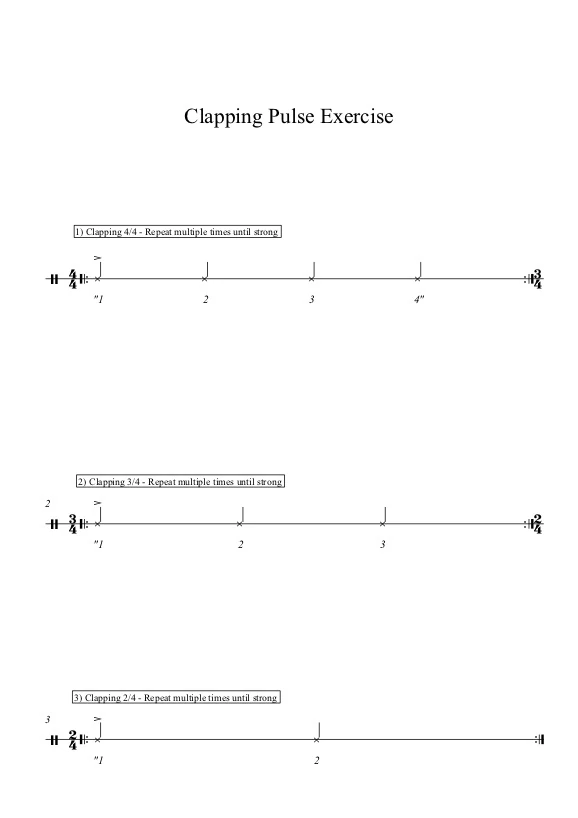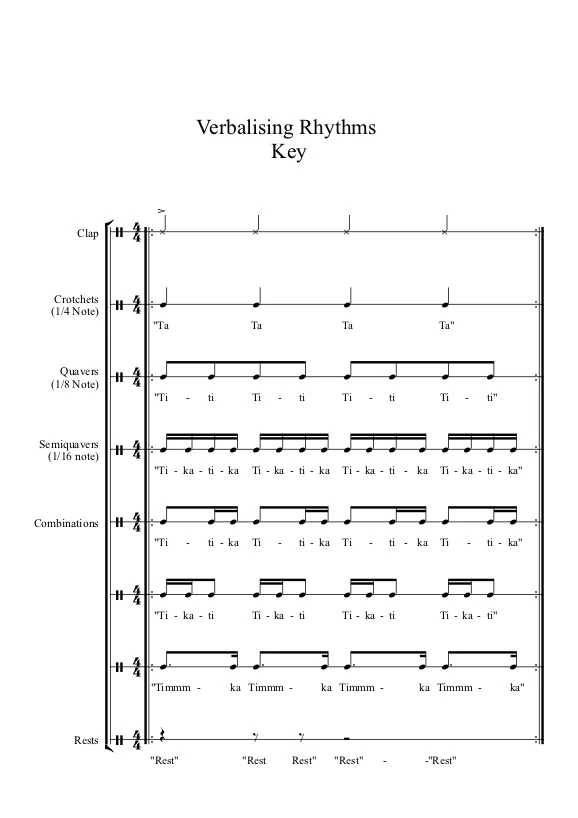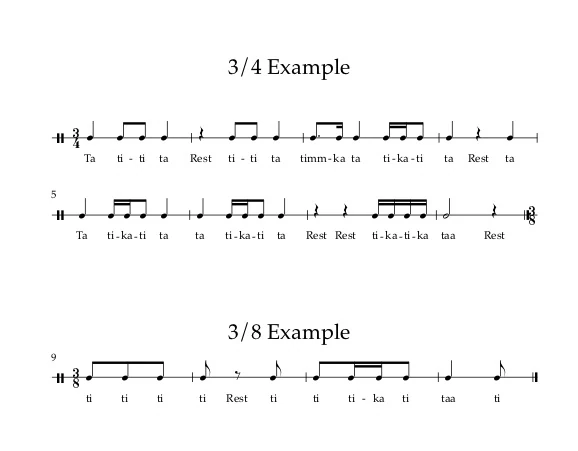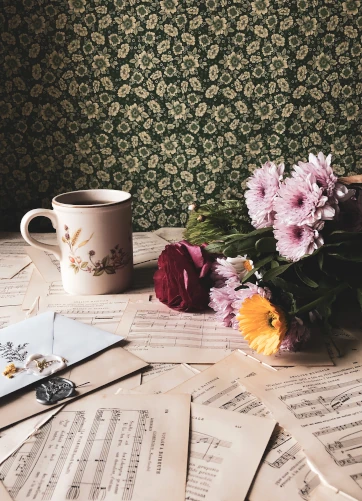Becoming a great sight reader is an essential skill for any musician. Apart from the obvious applications for sight reading, it improves your general musicianship too. If you become a good sight reader, it improves the efficacy of your practice time. For child musicians with good sight reading skills, it is a great asset. Good sight readers learn not only learn music more quickly but they are at a much lower risk of practising and internalising mistakes. In lesson time, a teacher will have to spend less time correcting mistakes and can focus on higher-level playing and performance techniques.
I have developed a very clear and strong method for teaching sight reading over the years, originally based on the Kodaly method. It has proven results over time, with all of my in-person students having good sight reading skills. The ultimate goal is for a student to hear written music in their head when looking at a piece of music, just as they can with a tune that they know well. People often write themselves off as being a ‘bad sight reader,’ or ‘hating sight reading!’ Don’t be one of them! With the simple steps below any musician can become a fantastic sight-reading instrumentalist!
Scroll down to the bottom of the page to download your free PDFs of the exercises to help improve your sight reading.
Identify Your Sight-Reading Weaknesses
One of the challenges of learning to sight read is that there always seems to be too many things for the student to concentrate on. When concentrating on playing a rhythm correctly, students often end up playing wrong notes, or poorly articulating a phrase. By trying to practise too many areas at once, students never make sufficient progress at any.
Basic sight reading can be broken down into 3 distinct areas of study:
- Note Recognition
- Pulse - Rhythm
- Articulation
It follows that you must practice these areas separately in order to develop your skills at each. Students tend to struggle with at least one of these areas, which affects their ability to perform the other two.
You may have some idea already which areas you struggle with. Do you find yourself getting stuck trying to read a note when playing? Do you have difficulty leaving the correct amount of time for rests, or guessing rhythms you don’t visually recognise? When you try to slur a phrase do you find yourself speeding up or playing notes faster than they should be? All of these could be a sign you need to develop one or more of these areas.
Pitch in Sight Reading
Note Recognition
There is a great deal of work required for students to learn how to correctly identify and play notes across the range of their instrument. The ultimate goal is to hear the written melody in your head when reading through it, however there are many MANY steps to take before getting to this goal. Don’t underestimate the challenge.
The process of learning to read and play notes on an instrument is often rushed, as young and older students alike are keen to play their instrument rather than practise reading! However the initial stages of learning to read music be seen the same way as learning to read words. When a child learns to read they must first read aloud in order to develop the skills they need to read in their own internal voice. Why would learning to read music be any different!
Read the Notes Aloud
In the early stages of learning to play written music, students should simply verbalise the notes on the page by reading aloud. This should not be done in time, students should take all the time they need to correctly identify the notes. When reading notes aloud, students should also take note of the key signature. If the piece has an F# in the key signature (G Major) then students should read all these notes in the piece as ‘F#’ unless indicated otherwise. ‘F’ in this case would be an incorrect response and result in a wrong note.
Intermediate students should also practice reading notes aloud in passages that are high or low, where they are unfamiliar with the notes they are reading.
Press the Keys on the Saxophone
Some students are able to visually identify notes without any issue, but they have difficulty translating these notes into a physical movement. After reading the notes aloud, students should repeat the process of reading out the notes, but during the second reading they should also do the correct fingerings on their instrument. Ensure that notes are fingered correctly when practising this.
Sing the Notes
A favourite of mine for students of any level, but particularly for intermediate and advanced students. Read the notes aloud as lyrics to the written melody. If you get lost with the pitch, use your instrument for a note to bring you back into the melody.
Pulse - Rhythm in Sight Reading
These inter-related areas are often poorly understood are practised incompletely. Many people struggle with ‘the rhythms’ in sight reading, and in order to improve this, a greater understanding of the relationship between rhythm and pulse must first be understood. Pulse can be thought of as the foundation – a homogenous cycle that repeats indefinitely. It needs to be evenly spaced and consistent. It is essentially the rhythmic ‘frame’ that defines the boundaries for your musical ‘painting.’ Rhythm is the higher-level musical ‘painting’ that interlocks with the pulse, and co-defines melody in tandem with pitch. A misunderstanding here can make faster rhythms interfere with the pulse, causing the musician to speed up or slow down.
Build A Stronger Sense of Pulse
Pulse can be described as the feeling of the ‘beat’ or ‘count.’ When you tap your foot ‘on-beat’ to music you are essentially tapping the pulse. Having a strong sense of pulse means you can physically feel the sensation of the beat. Also useful when reading music is to be able to count the pulse while playing e.g. ‘1, 2, 3, 4…’
When playing wind instruments, unless a student has a naturally strong sense of pulse, it can be very difficult to maintain a steady beat, especially during rest notes. The first exercise to practise is to build an internal awareness of the beat. Have a look at our videos on building a strong sense of pulse for children:
Video Tutorial: How to Help Your Child Improve Their Sense of Rhythm
Video Tutorial: How to Help Your Child Improve Their Sense of Rhythm
Have a look at the exercise below. It’s pretty straightforward.
- 1) Clap the pulse with a louder clap (accent) on beat 1
- 2) Say the numbers of the count out loud, ensure you say each number exactly on each clap
- 3) Try different time signatures you will encounter at Grade 1 – 4/4, 3/4, 2/4
- 1) Clap the pulse with an accent on Beat 1
- 2) Speak the rhythms on top of the clap
- 3) Vary the rhythms in different combinations
- 4) Try different time signatures
- 1) Speak the rhythms while clapping the pulse
- 2) Read the notes aloud (taking note of the key signature)
- 3) Speak the notes aloud in time
- 4) Play the piece!

Hear Rhythm as a Melody
Usually, students find it easier to play pieces at sight that they already know, because they can hear the tune in their heads. This combines both pitch and rhythm. We have already discussed how to develop the ability to hear written melodies. It follows that the same approach must be taken to develop the ability to hear rhythms in the same way, all related to the grounding rhythmic framework of the pulse.
In order to achieve this, students must build a connection from what they read on the page to what they hear in their heads! In the case of rhythm and pulse, this can be done by a method I have developed based on the Kodaly method. In this method, each and every written rhythm has a spoken syllable. By verbalising these rhythms, students start to develop the ability to hear the rhythms when presented with the visual cue.
Here is a summary of how to ‘speak’ the rhythms:

These are all the rhythms students are likely to encounter up to Grade 3. Practise these rhythms first as an extension of the pulse clapping exercise – its very important to relate all rhythms to the pulse.
A note on rests. Students often rush or fully ignore rests, as they are seemingly doing ‘nothing’ during this time. It’s very important to account for the beat during the rest time. Make sure you are clapping the pulse during the rests and verbalising this ‘note.’ Remember that a rest is not nothing, its simply a musical note of silence.
Once you have developed some familiarity with these rhythms, try reading through some simple pieces, clapping the pulse and speaking the rhythms. Here are some examples of approximately Grade 3 standard.

How to Practise Sight Reading
Once you have developed the skills for all these different areas of study, simply follow the method below when practising sight reading exercises
This simple method will help you develop the aural understanding to become a brilliant sight reader. Have fun and happy practising!
PDF Downloads
Download Clapping Pulse Exercises
Download Kodaly Method Rhythms Key
Download Sight Reading Exercises
Get Lessons to Help Improve your Sight Reading
Just visit our Saxophone Lessons Page to find out more, or click the link below if you're ready to get in touch and start taking private saxophone lessons!
